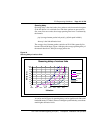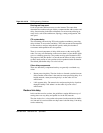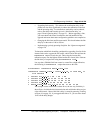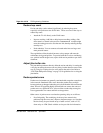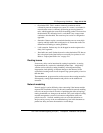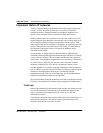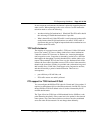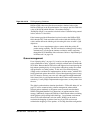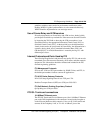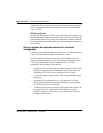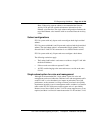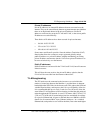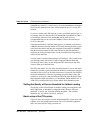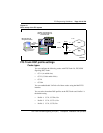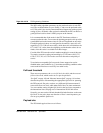
ITG Engineering Guidelines Page 129 of
378
ITG Trunk 2.0 ISDN Signaling Link (ISL) Description, Installation and Operation
guidelines with the router vendor for performance ramifications when
enabling WRED. If global synchronization is to be countered effectively,
WRED should be implemented at core and edge routers.
Use of Frame Relay and ATM services
IP can be transported over Frame Relay and ATM services, both of which
provide QoS-based delivery mechanisms. If the router can discern ITG traffic
by inspecting the TOS field or observing the UDP port numbers, it can
forward the traffic to the appropriate Permanent Virtual Circuit (PVC) or
Switched Virtual Circuit (SVC). At the data link layer, the differentiated
virtual circuits need to be provisioned. In Frame Relay, the differentiation is
created by having both “zero-Committed Information Rate (CIR)” and
CIR-based PVCs; in ATM, differentiation is created by having VCs with
different QoS classes.
Internet Protocols and Ports Used by ITG
The following IP applications and protocols are used by ITG 2.0, and must be
transmitted across the customers intranet by all IP routers and other network
equipment. This information should be validated and included in the ITG
network engineering guidelines.
ITG Mana
g
ement Protocols
ITG uses the UDP and TCP port numbers for SNMP, Telnet, and FTP, i.e.
the default port numbers for these common IP applications.
ITG H.323 Voice Gatewa
y
Protocols
H.245 Call Setup Signaling Protocol uses TCP port 1720.
Realtime Transport Protocol (RTP) uses UDP port 2300-2363.
ITG QoS Network Probin
g
Proprietar
y
Protocol
QoS probing uses UDP port 5000.
ITG ISL Trunk card connections
10/100BaseT Ethernet ports
The ITG ISL Trunk card has two Ethernet ports. One 10/100BaseT Ethernet
port on the DSP daughterboard, with connectors located on the faceplate or
on the I/O panel breakout cable, transmits Voice over IP (VoIP) traffic and
connects to the Telephony LAN, or T-LAN. A 10BaseT port on the



